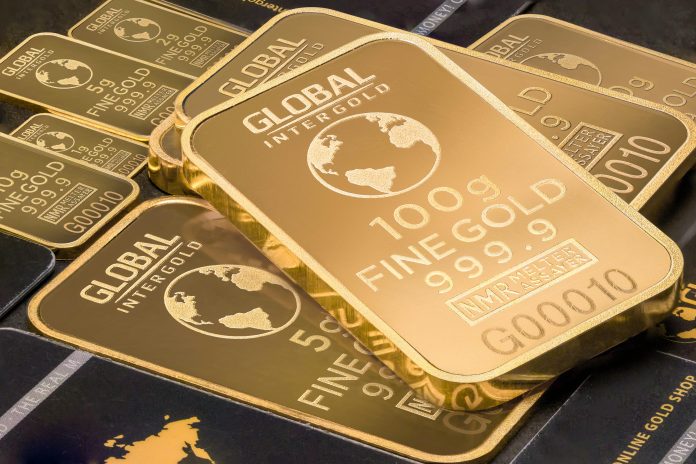For centuries, investors have turned to precious metals as a way to safeguard their investments against economic instability and inflation. Gold, silver, platinum, and palladium are among the most popular choices due to their unique qualities and investment prospects. This article delves into the rationale behind investing in metals, the various investment options available, and the risks and rewards associated with this asset class.
Reasons for Investing in Precious Metals
1. Protection Against Inflation
Investors often rely on precious metals as a hedge against inflation because their value tends to rise when fiat currencies lose purchasing power. Unlike paper money that can be devalued, these metals retain their worth over time, making them a dependable store of value during uncertain economic times.
2. Portfolio Diversification
Diversifying a portfolio is crucial in investing, and precious metals offer an avenue to diversify beyond traditional assets like stocks and bonds. Since the prices of metals often move independently from other asset classes, they can help reduce overall portfolio volatility and provide stability during market downturns.
3. Safe Haven Asset
Many people view precious metals as safe-haven investments, especially during periods of political tension or economic trouble. During times of stock market volatility or global uncertainty, investors often turn to metals to safeguard their wealth. This increased demand can push up metal prices, offering protection and potential profits during such periods.
Types of Investments in Precious Metals
1. Physical Metals
Investing in physical metals involves purchasing the actual metal in the form of bars, coins, or bullion. This approach allows investors to have direct ownership of the asset, providing a sense of security and a tangible investment. However, storing and insuring physical metals can be expensive and requires careful consideration.
- Gold: Gold is the most commonly invested precious metal, known for its scarcity, durability, and historical significance as a currency. It is available in various forms, such as coins (e.g., American Eagle, Canadian Maple Leaf) and bars.
- Silver: Silver is more affordable than gold, making it accessible to a wider range of investors. It has both industrial and investment demand, which can affect its price. Silver is commonly bought as coins or bars, with options like the American Silver Eagle.
- Platinum and Palladium: Although not as widely recognized as gold and silver, platinum and palladium are valuable metals used in various industries, such as automotive and electronics. These metals are often considered for their potential to appreciate in value due to supply constraints and industrial demand.
2. Exchange-Traded Funds (ETFs)
ETFs provide an option for investors who prefer not to handle physical metals directly. Precious metals ETFs track the prices of metals, allowing investors to gain exposure without the need for storage or insurance. While gold and silver ETFs are the most well-known, there are also options for platinum and palladium. These funds can be traded like stocks, offering liquidity and accessibility.
3. Mining Stocks
Investing in mining companies is another avenue for gaining exposure to precious metals. By purchasing shares of a mining company, you are essentially investing in its ability to extract and sell metals. The value of mining stocks is influenced by metal prices, as well as the company’s performance, management decisions, and production costs.
4. Futures and Options
Investing in metals through futures and options adds an element of risk and potential reward compared to owning physical metal directly. Futures and options contracts offer investors the opportunity to speculate on the future prices of metals. While these financial instruments can be profitable, they also come with significant risks due to their complexity and leverage.
- Futures Contracts: Involve committing to buy or sell a specified amount of metal at a predetermined price on a future date.
- Options Contracts: Grant investors the right, but not the obligation, to buy or sell metal at a predetermined price before a specified date. These strategies are more suitable for investors with a deep understanding of market dynamics.
Risks and Rewards of Investing in Precious Metals
1. Price Volatility
Despite being perceived as safe investments, precious metals can experience significant price fluctuations in the short term. Factors like interest rate changes, currency movements, and geopolitical events can trigger price shifts. Investors should be prepared for this volatility when planning their investments.
2. Lack of Regular Income
Unlike stocks or bonds that provide income through dividends or interest payments, precious metals do not generate earnings. The value appreciation is the primary source of returns for investors, making metals less appealing for those seeking regular income from their investments.
3. Liquidity Concerns
Although ETFs and mining stocks offer relatively easy access to liquidity, physical metals can present challenges in terms of selling. Disposing of large quantities of gold or silver in non-standard forms can be difficult and may involve significant transaction costs. Investors should be mindful of the liquidity challenges associated with owning physical metals.
Investing in precious metals offers a unique set of advantages, such as protection against inflation, portfolio diversification, and a safe haven during uncertain times. However, like any investment, it comes with risks, including price volatility, lack of income, and liquidity concerns. By understanding these factors and carefully evaluating their investment objectives, investors can make informed decisions about whether including precious metals in their portfolios is appropriate. Whether opting for physical metals, ETFs, mining stocks, or futures contracts, there are multiple avenues available to gain exposure to this enduring asset class.


